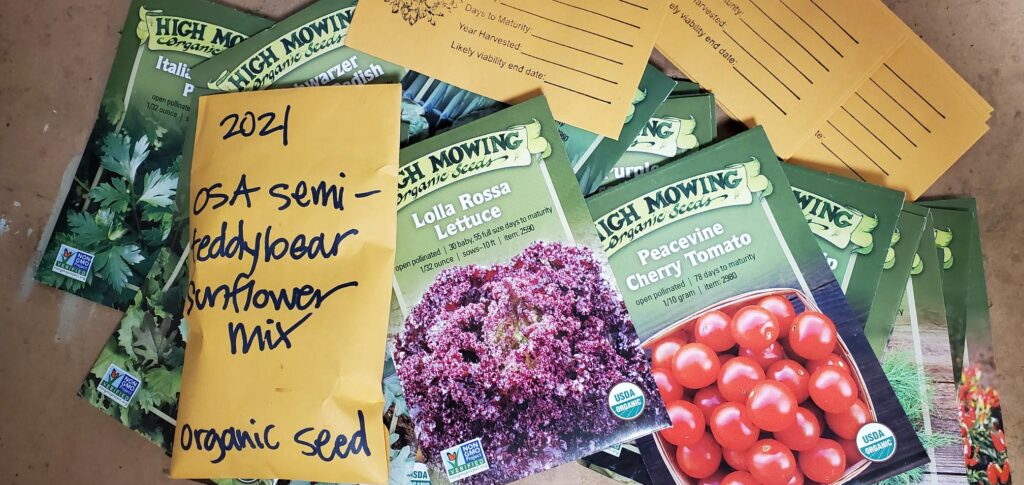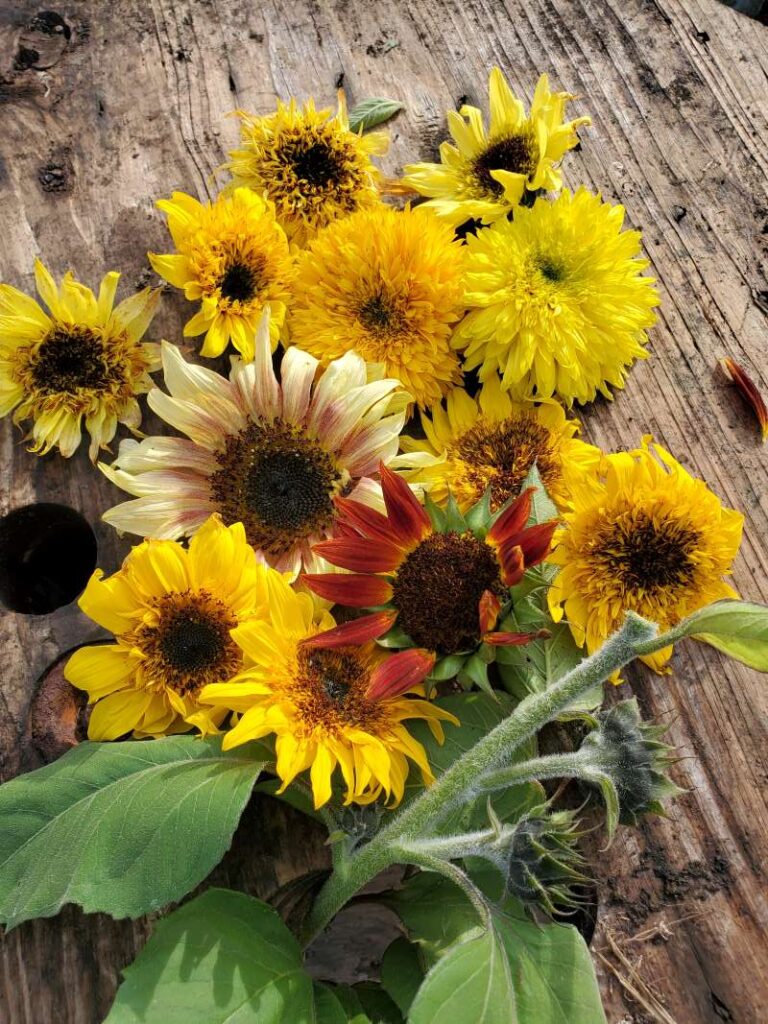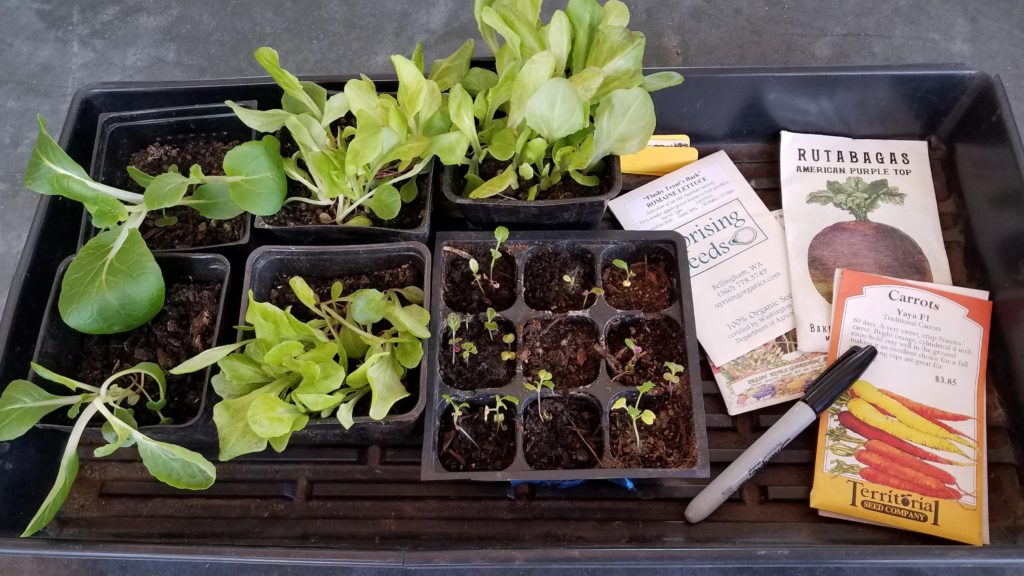Now is a great time to evaluate your seeds. It’s a fun rainy (or snowy) day project to pull out the box and flip through the packets. What did well? What did poorly? What can’t you wait to plant again? Perhaps most importantly, what can you take to the seed swap and be sure your gardening friends will be getting good seed?
As you hold an older packet in your hand, one big question comes to mind: Are these seeds still viable? Three years is a good general cutoff date, but some will last much longer. And if you haven’t been as careful as you should have in storage, they might not sprout. So how do you know?
There’s a pretty easy way to find out if the seeds are still good: do a germination test. Here’s one way to do it, in 5 steps. As an example, I will use a test that I began today.
1. Count out a good quantity of seeds. In this test, I used Black Spanish Radish (Raphanus sativus) from 2020. This was the last of a large bag tied up in the garage. I shelled them from their pods until I had 100 seeds.
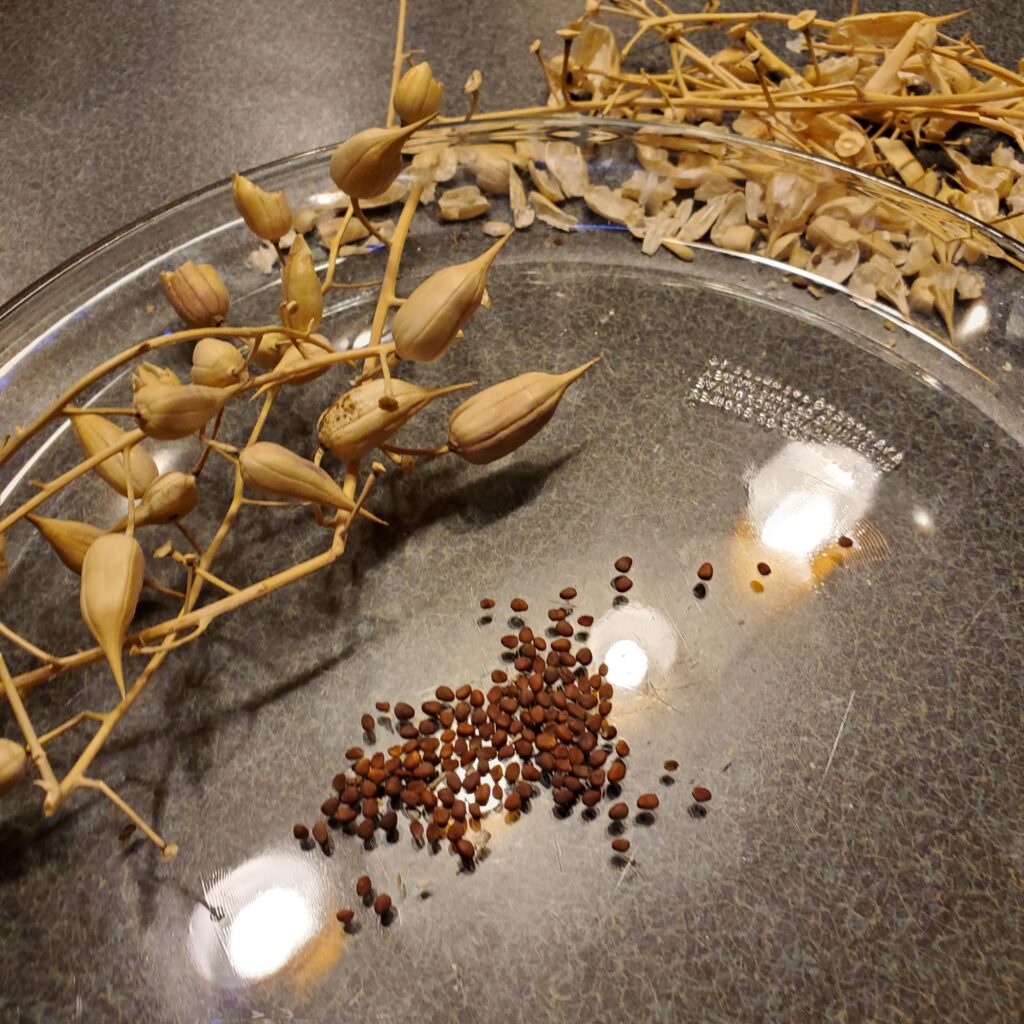
2. Place the seeds on a moistened paper towel. This will give them a place to germinate.
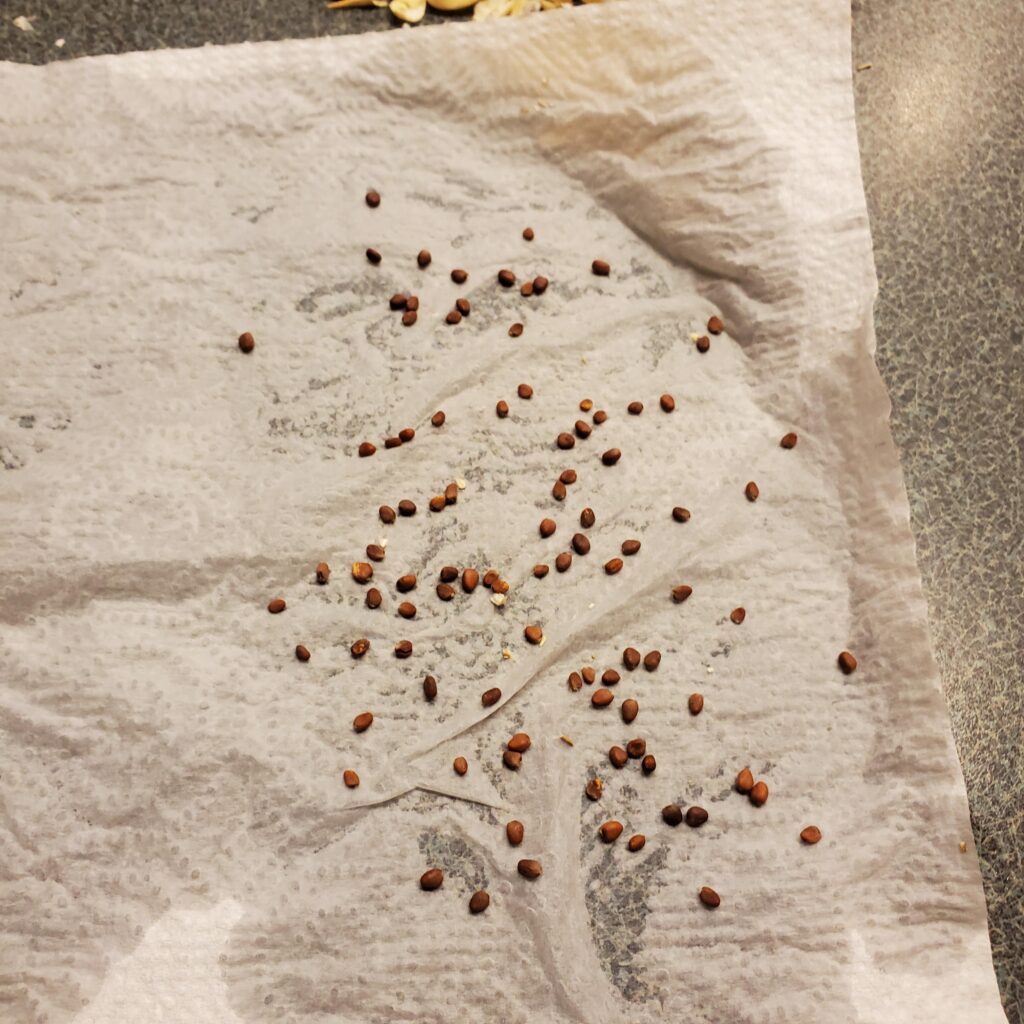
3. Fold over the paper towel and insert it in a large zippered plastic bag. Lay it flat in a warm place out of the way. I use the top of my refrigerator.
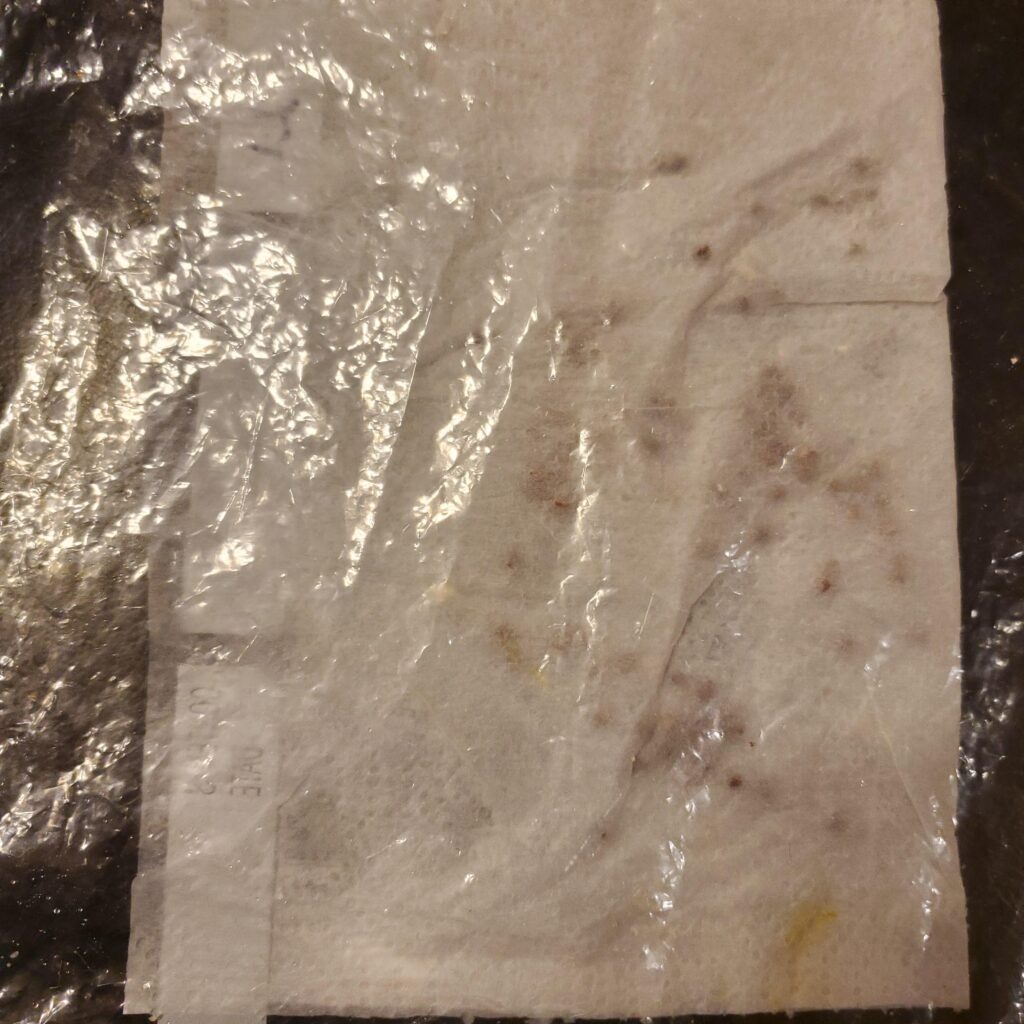
4. Monitor the project daily for the next two weeks. Don’t let the paper towel dry out–the seeds need the moisture to sprout. Just open the bag and sprinkle a little water on the paper, or squirt it with a mister. Keep it moist, but not too wet.
5. Some seeds sprout within a few days, while others can take up to two weeks. When you see the first ones sprout, wait a few more days. Then open it up and count the little green shoots. The seed would be considered viable to share if more than 60 percent of the seeds sprout in your test. A higher number would be much better. At 50 percent or below, it’s best to just toss those seeds on the compost heap and buy (or swap for) fresh seed.
I’ll update this post with the results of my test, so check back in a couple of weeks. Meanwhile, start your own germination test–and post your results to our Facebook page!
Update: 60 Percent Germination
Well, after 10 days I pulled the plastic bag from the top of the fridge and saw some pretty good sprouting. Not great, but good. Turns out my Black Spanish Radish seeds are right on the edge of the viability: just over 60 of the 100 seeds sprouted, a 60% germination rate. I will share the seeds this year while letting people know to sow a little more heavily, and then compost any leftover seeds after this season.
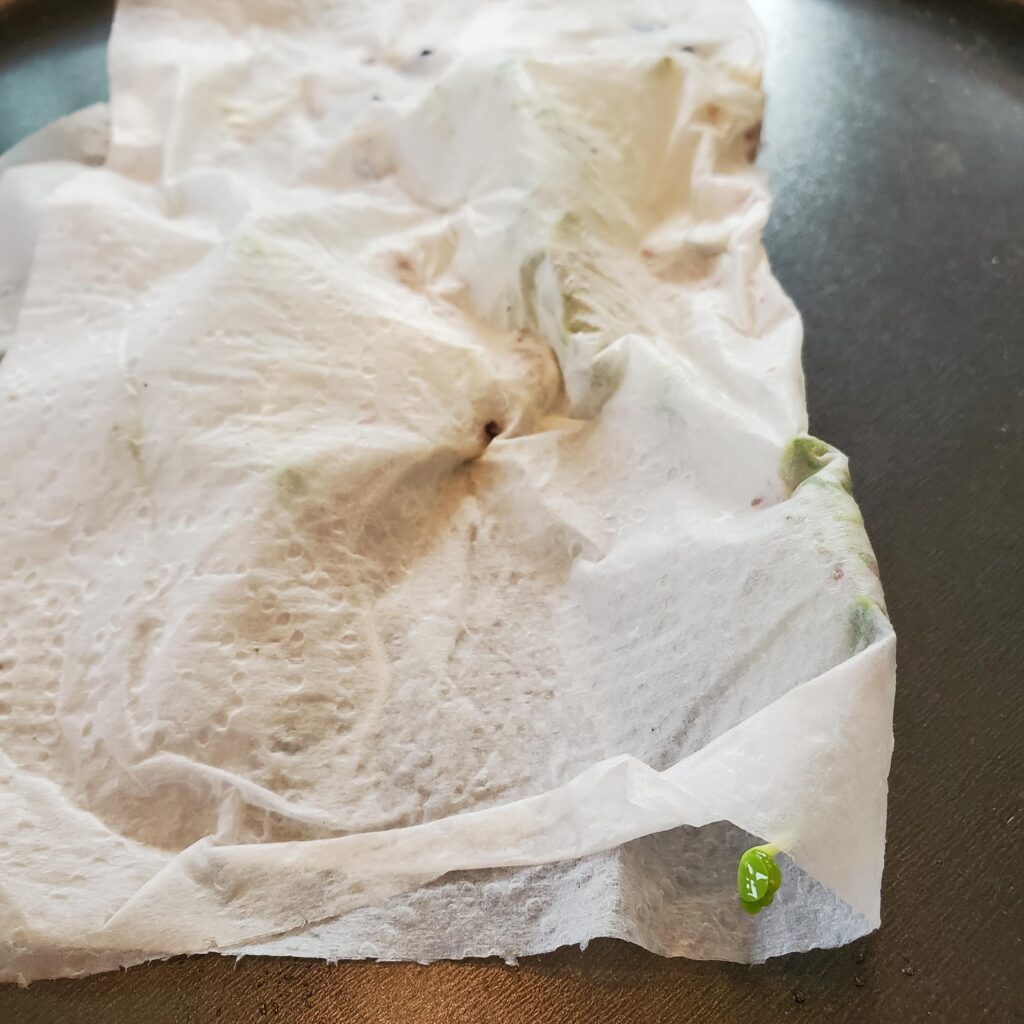
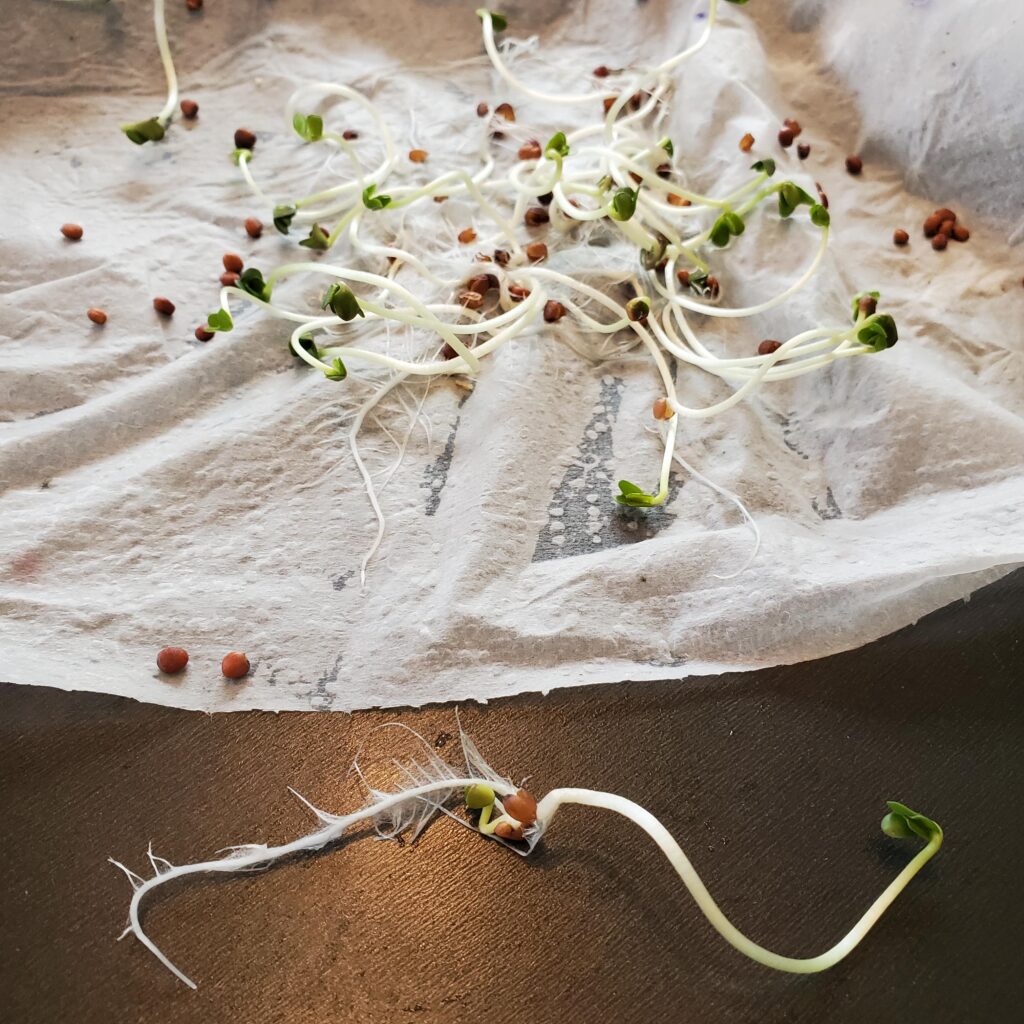
There are other methods and of course advice varies. Here are some germination testing resources:
https://extension.illinois.edu/blogs/ilriverhort/2017-02-03-test-seed-viability
https://www.newstribune.com/news/2021/jan/31/Ask-a-Master-Gardener-Germination-test/
https://www.southernexposure.com/how-to-test-germination/
https://www.highmowingseeds.com/blog/how-to-do-a-quick-germination-test-at-home/

